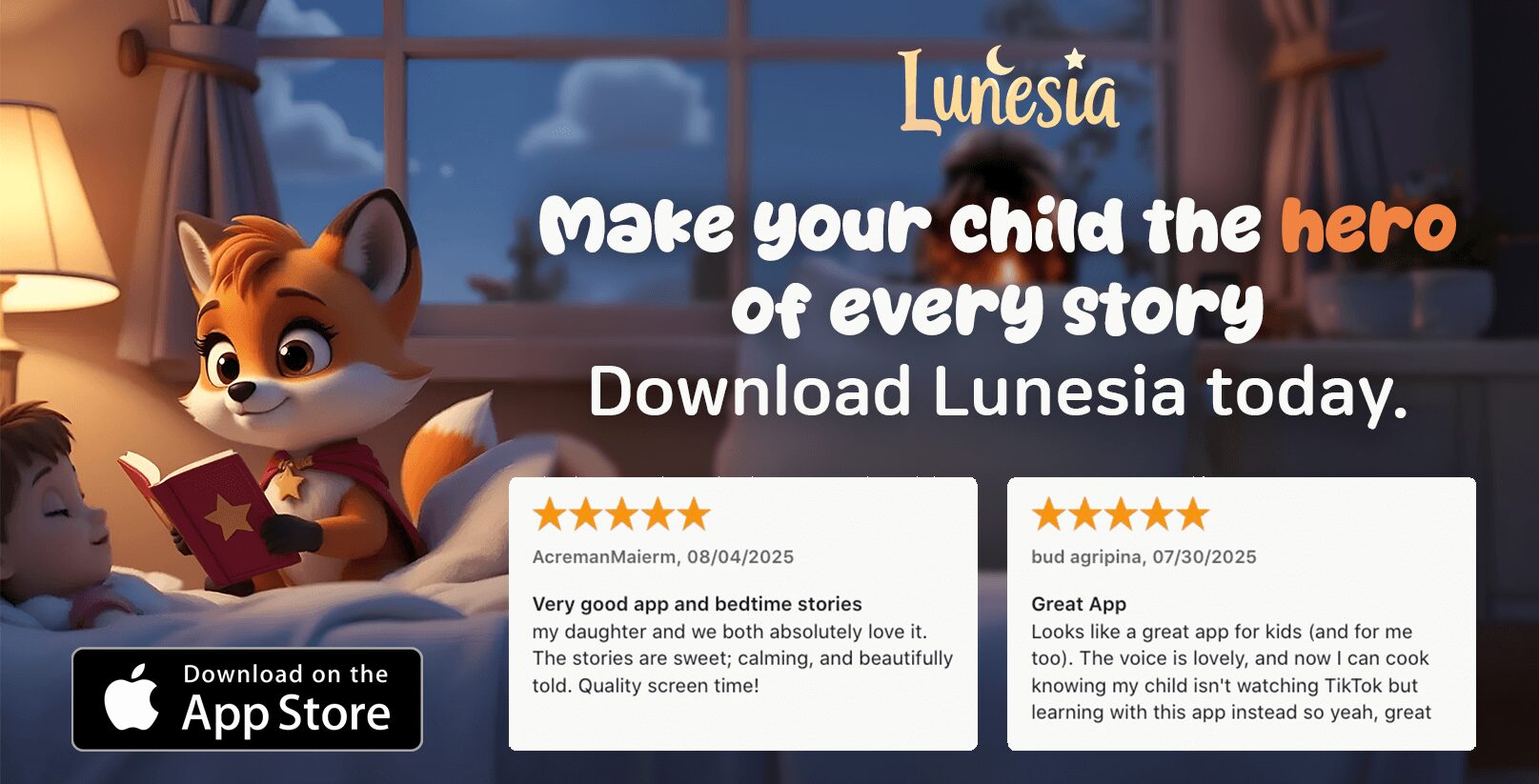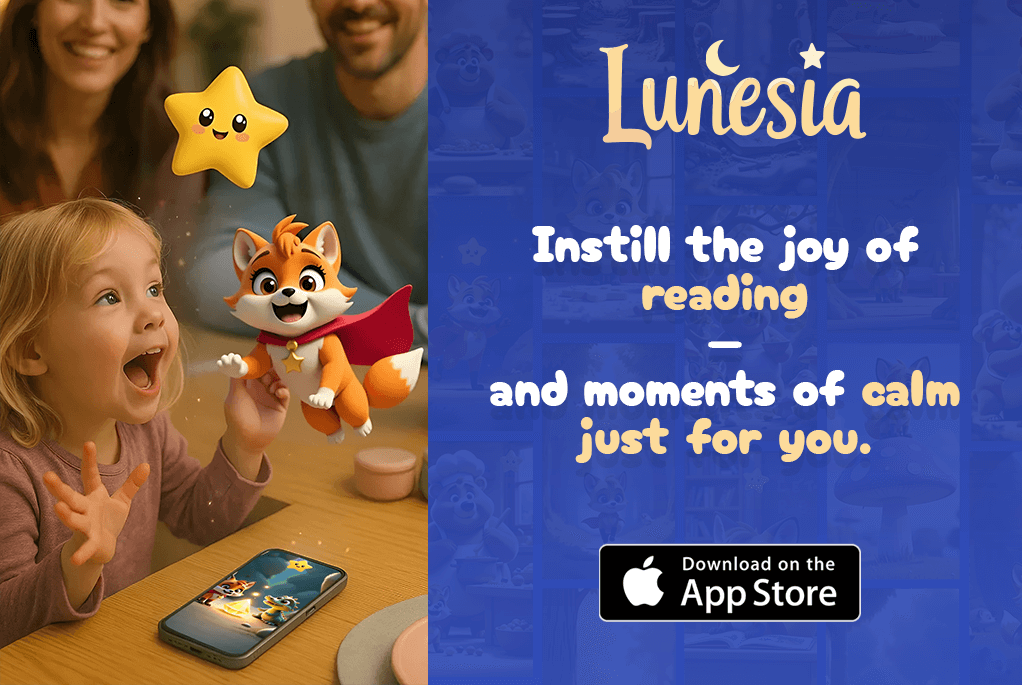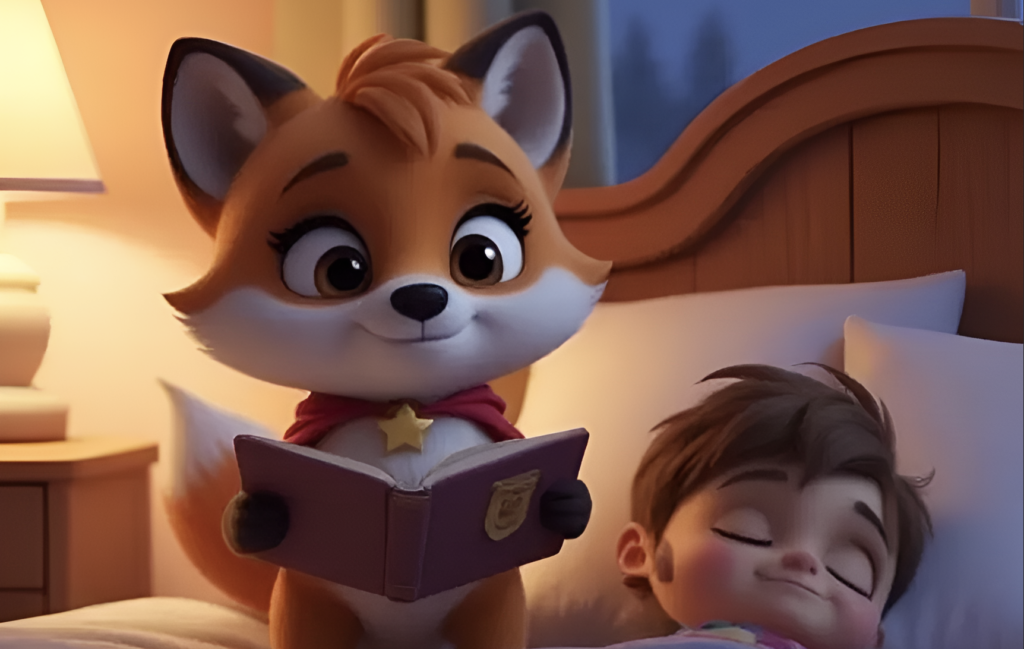As a parent, navigating the world of educational apps can be overwhelming. I’m here to help you make an informed decision about digital play for your kids.
Two popular platforms, Lunesia and Pok Pok Montessori, offer innovative approaches to learning through play. Both apps promise to develop essential skills in children, but they differ significantly in their philosophies and implementation.
In this article, we’ll explore how these platforms balance entertainment and education, examining their features, age appropriateness, and the specific skills they help develop. By the end, you’ll have a clear understanding of which app might be the best fit for your child’s learning journey.
Understanding Digital Play in Child Development
Digital play has become an integral part of modern childhood, offering new avenues for learning and growth. As a parent, it’s essential to understand how digital play can support your child’s development.
The Role of Educational Apps in Modern Childhood
Educational apps are transforming the way kids learn and develop essential skills. According to Michael, a dad of a 4.5-year-old, “This is really the greatest digital thing we’ve put in front of [our son] since we let him interact with technology around age 2.” Quality educational activities on tablets and smartphones can support various developmental milestones when thoughtfully integrated into a child’s routine.
Balancing Screen Time with Educational Value
While screen time is a concern, research suggests that interactive, open-ended digital play can support cognitive development, problem-solving skills, and creativity when used as a complement to physical play. When evaluating educational apps for kids, consider how the activities support specific developmental goals and whether they encourage active rather than passive engagement in various activities.
Lunesia vs Pok Pok Montessori: Core Philosophies Compared
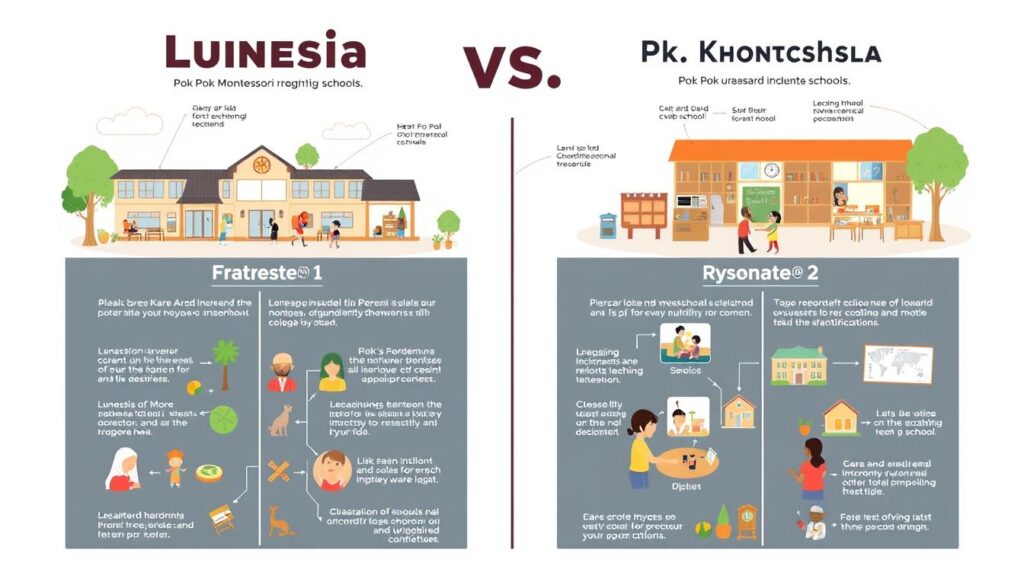
For parents choosing between Lunesia and Pok Pok Montessori, understanding their core philosophies is crucial. Both apps are designed for kids, focusing on learning through digital play, but they embody different educational approaches.
Lunesia’s Approach to Digital Learning
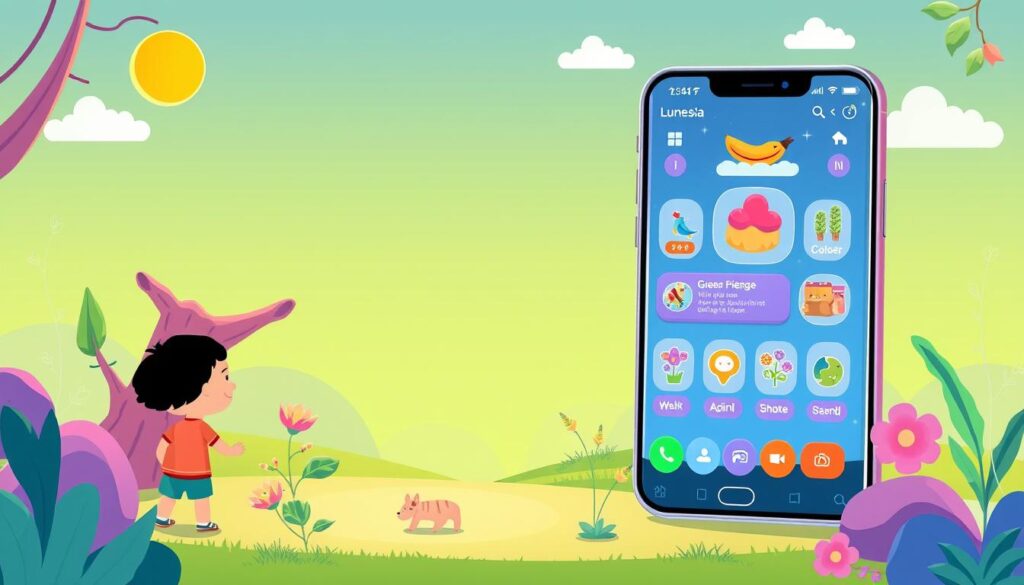
Lunesia’s philosophy centers around a hybrid model that combines structured activities with open-ended play. This approach allows children to explore and learn at their own pace while benefiting from guided learning opportunities. The app is designed to foster skills development through a variety of activities tailored for kids.
Pok Pok’s Montessori-Inspired Methodology
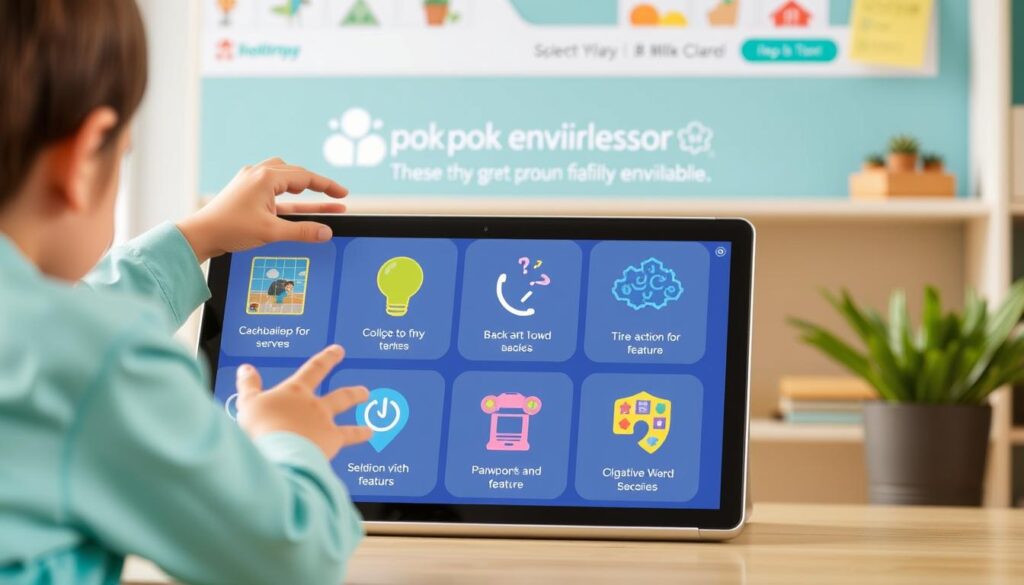
Pok Pok Montessori, on the other hand, draws heavily from Maria Montessori’s educational philosophy, emphasizing self-directed activities, hands-on learning, and collaborative play within a carefully prepared digital environment. According to Dr. Sudha Swaminathan, a Professor of Early Childhood Education, Pok Pok is “a very powerful learning tool” that encourages exploration and caters to all types of learning for children.
Understanding these philosophical differences is key for parents who want to align their kids’ digital experiences with their preferred educational approach and learning style. While both apps prioritize child-led exploration and skills development, they differ significantly in their approach to digital play and the structure of their activities.
Pok Pok Montessori: A Closer Look

For parents seeking a digital environment that’s both fun and educational, Pok Pok Montessori is worth exploring. Designed for kids aged 2-8, this award-winning app offers a growing collection of Montessori-inspired activities that are non-addictive and child-led.
Key Features and Learning Activities
The Pok Pok Montessori app features a range of digital “toys” that mirror the physical materials found in traditional Montessori classrooms. Key activities include pretend-play in Town, creative expression in Dress-Up, and STEM learning through the Marble Machine. These activities are designed to develop different skill sets in preschoolers, promoting hands-on learning through digital interaction.
Age Appropriateness
Pok Pok Montessori is specifically designed for children aged 2-8, with activities that adapt to different developmental stages within this range. This ensures that the app remains engaging and challenging as your child grows.
Subscription Details and Pricing
The subscription model costs approximately $45.99/year, providing access to all current and future activities without additional in-app purchases. This makes it a cost-effective option for families seeking a high-quality educational app.
Exploring Lunesia’s Digital Playground

Step into Lunesia’s digital playground, where children can explore, learn, and grow through interactive activities. Lunesia creates a digital environment that combines structured learning activities with open-ended play, offering kids a diverse range of experiences.
Unique Features and Learning Approach
Lunesia incorporates social-emotional learning alongside cognitive development, recognizing the importance of whole-child development. The app’s adaptive technology adjusts difficulty levels based on a child’s interactions, making it suitable for various ages and abilities.
Target Age Range and Adaptability
The platform is designed for kids, with a focus on providing appropriate challenges as they progress. Lunesia’s narrative-driven approach weaves learning activities into engaging stories that captivate children’s imagination.
Cost Structure and Value
Lunesia offers both monthly and annual subscription options through the Lunesia app, with the annual plan providing better value for families. Parents appreciate the detailed progress reports that help them understand their kids’ learning and support their development.
User Experience: How Children Interact with Each Platform
The way children interact with digital platforms like Pok Pok and Lunesia reveals a lot about their learning preferences. Both apps have been thoughtfully designed with young children in mind, but they take different approaches to navigation, visual design, and audio elements.
Navigation and Accessibility
Pok Pok’s interface is remarkably intuitive, allowing even very young children to navigate independently. For instance, a 2.5-year-old user named Clara was able to explore the app on her own, simply stating “I love the frog” when asked about her experience. This demonstrates how accessible the platform is.
Visual and Audio Elements
The visual design of each platform creates distinct emotional environments. Pok Pok offers a calm, hand-drawn aesthetic, while Lunesia tends toward more vibrant, animated visuals. Audio elements also play a crucial role, with Pok Pok using realistic sound effects and Lunesia incorporating more musical elements.
Engagement Factors
Parents report that both apps invite discovery and exploration. Pamela, mom of children aged 2½, 4, and 5, noted that Pok Pok “invites my kids to discover things on their own, helping them become more confident.” Paul, father of a 5-year-old, observed that Pok Pok’s activities have “a whole lot more depth” than other apps his daughter has used. You can explore more educational apps like these on Funexpected Apps, which offers a curated list of top educational apps for kids.
Some kids prefer the open-ended exploration of Pok Pok, while others like the structured guidance sometimes found in Lunesia. This difference in approach caters to various learning styles and preferences, making both apps valuable tools in a child’s educational journey.
Educational Value: Skills Development Comparison
Both Lunesia and Pok Pok Montessori offer unique learning experiences, but how do they compare in terms of skills development? As we explore their educational value, it’s clear that both platforms support cognitive development through problem-solving activities, albeit with different emphases.
Cognitive and Problem-Solving Skills
Pok Pok excels at developing spatial reasoning and logical thinking through its open-ended tools, while Lunesia provides more structured cognitive development activities with creative freedom.
Creativity and Imagination
Both platforms foster creativity, but through different approaches: Pok Pok via open-ended creation tools and Lunesia through guided activities.
Social-Emotional Learning
Both apps address social-emotional learning, with Pok Pok noted for its calming effect on children, encouraging them to discuss their discoveries.
| Skills | Lunesia | Pok Pok Montessori |
|---|---|---|
| Cognitive Development | Structured activities | Open-ended tools |
| Creativity | Guided activities | Open-ended creation |
| Social-Emotional Learning | Supported | Calming effect, discussion encouragement |

Parent Controls and Involvement
The role of parents in managing their kids’ digital learning experiences is multifaceted, involving tools for monitoring progress and managing screen time. Both Lunesia and Pok Pok Montessori recognize the importance of parental involvement in children’s digital learning.
Monitoring Progress and Usage
Lunesia offers detailed analytics about a child’s progress, allowing parents to identify areas where their child needs additional support. In contrast, Pok Pok Montessori provides a clean, ad-free environment that fosters independent exploration. This difference in approach can significantly impact how parents choose to engage with their child’s digital learning.
Customization Options
Both platforms offer customization options that enable parents to tailor the experience to their child’s needs. Parents can adjust difficulty levels, select specific skill areas to focus on, or enable/disable certain features. This level of control ensures that the learning experience is optimized for each child.
Screen Time Management
The approach to screen time management differs between the two apps. Lunesia offers explicit timer options and usage limits, giving parents direct control over screen time. Pok Pok Montessori, on the other hand, incorporates natural stopping points in activities, encouraging a more hands-off approach to managing screen time.
| Feature | Lunesia | Pok Pok Montessori |
|---|---|---|
| Progress Monitoring | Detailed analytics | Clean, ad-free environment |
| Customization | Adjust difficulty levels, select skill areas | Tailor experience to child’s needs |
| Screen Time Management | Explicit timer options, usage limits | Natural stopping points in activities |
As I reflect on the importance of parental involvement, I recall a quote from a fellow parent: “The key to maximizing the educational potential of these apps lies in how we, as parents, choose to engage with our children about their digital learning experiences.” This sentiment underscores the value of using the parental tools provided by Lunesia and Pok Pok Montessori not just to limit screen time but to foster meaningful conversations about what kids are learning.
How They Compare to Other Educational Apps
The world of educational apps is vast, and understanding where Lunesia and Pok Pok Montessori fit in can help parents make informed decisions. To position these apps among top educational platforms, let’s examine their features and pricing models.
Positioning Among Top Educational Platforms
Lunesia and Pok Pok Montessori are part of a competitive market that includes a range of educational apps. Here’s a comparison of some key players:
| App | Age Range | Focus Areas | Cost |
|---|---|---|---|
| Pok Pok | 2-8 | Montessori play, creativity | $59.99/year |
| ABCmouse | 2-8 | Reading, math, science | $9.99/month |
| Khan Academy Kids | 2-8 | Literacy, math, SEL | Free |
| Sago Mini World | 2-5 | Open-ended play | $11.99/month |
Unique Selling Points
What sets Lunesia and Pok Pok Montessori apart is their emphasis on open-ended exploration and integrated play experiences. Unlike apps that focus on specific skills, these platforms foster a more holistic approach to child development.

Value Proposition for Families
For families considering these apps, the decision often comes down to their priorities. Are they seeking specific skills development, or do they value a more comprehensive educational philosophy? Both Lunesia and Pok Pok Montessori offer unique value propositions that cater to different family needs.
By understanding the strengths and focus areas of each app, parents can make informed choices that align with their child’s learning needs and their own educational values.
Making the Right Choice for Your Child
In the world of digital play, finding the perfect fit for your child involves considering their individual learning style and interests. Choosing between Lunesia and Pok Pok Montessori depends on understanding what works best for your child.
For kids who thrive in open-ended exploration, Pok Pok’s Montessori-inspired approach might be ideal. On the other hand, children who benefit from structured activities with creative freedom might enjoy Lunesia.
- Consider a free trial to see which app captures your child’s interest and keeps them engaged.
- Observe how your child interacts with each platform to gauge their suitability.
- Remember, the best digital learning tool complements offline experiences and aligns with your family’s values.
Both apps offer valuable learning opportunities through quality digital play. The right choice is the one that works best for your unique child and family situation.
FAQ
What are the main differences between digital play platforms for kids?
Different platforms have distinct approaches to learning, such as Montessori-inspired methods or more playful, interactive experiences. Understanding these differences is key to choosing the right one for your child.
How do I know if an educational app is suitable for my child’s age?
Look for apps that specify their target age range and adapt to your child’s developmental stage. Some apps, like those designed for preschoolers, cater to children as young as two years old.
Can digital play help with my child’s cognitive development?
Yes, many digital play platforms are designed to enhance cognitive skills, problem-solving, and creativity. They often incorporate activities that encourage learning through play.
How can I manage my child’s screen time while still allowing them to benefit from digital play?
Many platforms offer parent controls that allow you to monitor and limit screen time. Setting boundaries and choosing apps with educational value can help strike a balance.
Are there any digital play platforms that offer a free trial or flexible pricing?
Yes, some platforms provide free trials or subscription models that can be adjusted based on your needs. This allows you to test the service before committing to a purchase.
How do digital play platforms support social-emotional learning?
Many platforms incorporate activities that foster social-emotional skills, such as empathy, self-awareness, and self-regulation, often through interactive stories and games.

